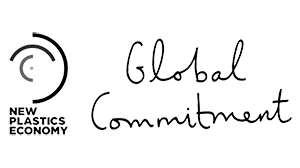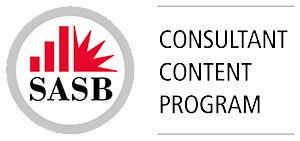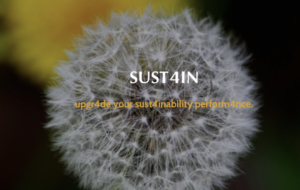Climate change, carbon pricing and business strategy: 4 disrupting questions
Climate change is already transforming – and killing – business models and, more critically, lives.
The last three weeks have been full of climate change news and signals, namely coming from businesses and governments gathered in Paris and Barcelona at different meetings: most of them very positive, some almost unbelievable.
It is now clear that business is asking for a carbon price and will be the main driver for climate action. Business not just needs to urgently change, but is pushing for a bold Paris agreement in December. Not because of a newfound love for the planet, but because it makes business sense: climate change poses an enormous risk for all businesses and presents opportunities to many.
Climate Week Paris
It has been a privilege to be part of the Climate Week Paris, 200 days before COP21. Especially at the Business&Climate Summit on 20-21 May, but also at the Climate Finance Day on the 22nd, both at the unusual UNESCO Headquarters in Paris. Some conclusions:
- The Business&Climate Summit was the most important business meeting around climate change ever: 2,000 delegates from France (40%), Europe and elsewhere, had the occasion to see “la crème de la crème” of business, government, multi-lateral agencies, and some NGOs. More than 40 CEOs from international companies and organizations, heavy-weight government representatives, including of course President François Hollande and his ministers: Ségolène Royal (Environment), Laurent Fabius (Foreign Affairs) and Michel Sapin (Finance), plus the Minister of Petroleum of Saudi Arabia, Ali al-Naimi (a surprise new climate star, see below), the US Secretary of State, John Kerry (by video), and the people in charge of the international organizations such as Christiana Figueres (UNFCCC), Angel Gurría (OECD). Conclusion: Governments are asking business to implement climate action, while business is massively asking governments to enable predictable legislation and to send clear signals.
- The shock moment: Saudi Arabia, the oil kingdom, may stop using fossil fuels as early as in 2040. “We are not going to need fossil fuels. I don´t know when – in 2040, 2050 or thereafter”, said the Minister of Petroleum of Saudi Arabia, Ali al-Naimi. The admission was so disturbing that most of us thought that the oil boss was being sarcastic, but he was serious, too ambitious maybe: the Saudis are already investing billions of dollars in solar energy and want to start exporting electricity in 5 years, he continued. The next day his words were on the cover of the Financial Times, plus coverage on Wall St Journal etc. Conclusion: fossil fuels will be replaced by renewables earlier than most think.
- The French push: it was not just that President Hollande was there, he has actually delivered an impressive speech asking for a robust agreement at COP21 in December in Paris and even talking about green bonds. The President was in great mood also because the day before he had signed an agreement with Angela Merkel, Chancellor of Germany, with specific commitments, similarly to what the US and China did a few months ago. On 26 May France signed a new Environmental law promoting renewables, energy efficiency, waste reduction and cutting nuclear energy. Michel Sapin, France Finance Minister, announced another new law – a first in the world – requiring the disclosure of the carbon footprint of the portfolios of all institutional investors, such as pension funds and insurance companies. Conclusion: Paris will not be disastrous Copenhagen and even if it is not totally successful, countries will implement bilateral and multilateral agreements.
- Carbon pricing is now a consensus: Angel Gurría, OECD Secretary General, went further passionately asking for a “big, fat price”. President Hollande said “carbon pricing is the most tangible signal… as it can drive behaviour”. Pricing must be “carefully designed, robust and predictable”. Patrick Pouyanné, CEO of Total, was supportive and later joined other five big oil companies on a public letter to the UNFCC (see more below).An online survey among the delegates gave prices in the range of $40-100/tCO2 in 2030 and $60-200/tCO2 in 2040. At the separate Climate Finance Day on 22 May it became clear that there are business models being built on high prices. The World Bank has later released a report showing that 40 countries and more than 20 cities, states and provinces now using or planning to use a price on carbon to bring down greenhouse gas emissions. Altogether, the initiatives in operation today are valued at almost $50 billion. Over 150 companies already use internal “shadow” pricing. We Mean Business has even released an animation to explain the benefits of pricing. Conclusion: Compared with the current $10 (€7 in the EU ETS) these prices are very high, but the fact that 25% of a well informed audience forecasted $200/t in 2040 can not be ignored. See more below at Carbon Expo.
- Carbon taxing may be more efficient than carbon trading, provokingly said Angel Gurría. The province of British Columbia has implemented taxes while growing, for instance, but carbon trading is here to stay. Public-private partnerships, or less poetically fiscal policies, namely subsidies were high in the agenda. A polemic IMF paper, published on 18 May, was repeatedly quoted by OECD’s Angel Gurría: the paper says that energy subsidies have reached the astonishing figure of $5.3 trillion, which is equivalent to four times the Spain GDP or 6.5% of global GDP. Despite the political challenges to phase out energy subsidies, many countries are already doing just that while the oil prices are low. Conclusion: We all benefit from these subsidies, but business is now asking to end them. When asked about the impact on the bottom line of such subsidies however, CEOs quietly admit they do not know.
- Green Bonds are high in the agenda.President Hollande mentioned them, various issuers and investors were showcasing their benefits. Angel Gurría, Secretary-General of the OECD, said the day before: “almost 40 billion Dollars of green bonds were issued in 2014. That’s almost three times the total for 2013, and we expect this number to double in 2015. The European Investment Bank (EIB) was also supportive “for the Green Bonds Principles which are essential for guaranteeing investor confidence in this new asset class”, said Jonathan Taylor, Vice Chairman of the EIB. Although it is growing rapidly, the market for green bonds remains a tiny fraction of the 100 trillion US Dollar global bond market.” Conclusion: Green Bonds are growing, have plenty of room to grow and are probably the best financial instrument to mobilize the trillions of dollars, seating in pension funds for instance, needed to quickly implement adaptation and mitigation measures.
- Specific commitments can be made:Henri de Castries, the Chairman and CEO of AXA, has unveiled very specific commitments, such as a €500m divestment from coal, tripling AXA’s green investment footprint aiming to reach to over EUR 3 billion by 2020 and integrating ESG footprint in all relevant asset classes of AXA’s General Account by end 2015. Pierre-René Lemas, CEO of Caisse des Dépôts group, on its turn, announced a €15 billion commitment to financing the transition to a low carbon and environmentally resilient economy between 2014 and 2017, as part of the Montreal Pledge they have signed. The EIB also committed “over €50 billion to climate investment over the next 3 years”. In parallel 105 organizations have already committed to the CDP and We Mean Business Road to Paris initiatives. Conclusion: concrete commitments are not just possible, but needed, especially from large organizations more exposed to climate change.
Carbon Expo
More than 2,000 delegates attended the 12th edition of Carbon Expo, back to Barcelona, on 26-28 May. There was a clear overlap of speakers and delegates between Paris and Barcelona, but Carbon Expo was more global, technical and royal (as it was opened by King Felipe VI of Spain). As usual Carbon Expo is where practitioners meet and it was good to meet some people who were at the first Carbon Expo in 2004 still active. On a less positive note, business leaders were less present. A session called “CEO roundtable” had only one CEO for instance.
The event was organized by the World Bank, Fira Barcelona and IETA which published their “GHG Market Sentiment Survey 2015” : for the first time in four years the market is saying that carbon prices will go up in Europe to €10.79, from €8 in the 2014 survey. The average price expected from 2020-30 is €18.40, below the €29.60 perceived as to drive low carbon investment, and well below the “Paris survey” average.
Addressing the opening ceremony, Rachel Kyte, Vice President and Special Envoy for Climate Change at the World Bank Group, said, “We hope you will lift up your eyes to Paris and beyond as we try to do something we have never attempted before, which is to grow without carbon. Market mechanisms will be key to mobilizing a global response of an appropriate scale. Carbon pricing will be a necessary if insufficient component of each country’s transition, accompanied by other measures to get prices right and send signals to economic actors.”
The Greenpeace was present with at least two demonstrators asking for “100% renewables” at the opening ceremony, plus a large banner on a tower close to the venue.
40 Spanish companies, united under the Spanish Chapter of the Green Growth Group, promoted by the Spanish Ministry of Environment, unveiled the “Barcelona Declaration”, without specific commitments, but with 10 recommendations for an environmental and social development. The document reflects on the fact that job creation is compatible with climate action.
Provocative moderators were missing: Carbon pricing was hypnotically repeated for example, but nobody wanted to forecast prices or disclose internal “shadow” prices (currently varying between $6 to $89). A session on 10 years of EU ETS, the European Emissions Trading Scheme, virtually concluded that the EU ETS is a “success, despite a few issues”. The exception was precisely the closing plenary – for those who had survived the marathon – when the veteran John Kilani, Director, Sustainable Development Mechanisms Programme, UNFCCC, passionately challenged the consensus of benchmarking and rankings as a tool to motivate improvements.
Carbon Expo ended with optimism about the use of pricing, market mechanisms and an expectation that prices will go up.
Emerging countries and the Sustainable Development Goals.
Emerging countries were not very present in Paris, especially China, with only one speaker, Liu Zhenya, Chairman, State Grid Corporation of China, who rightly insisted on the need to connect grids. Russian speakers were completely absent.
Also missing, in both meetings, were the Sustainable Development Goals (SDGs), to be approved by the United Nations in September, were largely ignored. No matter if one of the SDGs is precisely related to Climate Change and most, if not all, the other 16 goals are intimately linked to it. Business seems not to bother with the other Sustainable Development issues, but it is positive that there is focus on the most important long-term problem, especially if poverty continues to decline.
“The road to Paris”
This week and the next the future agreement is being discussed in Bonn. The EU is openly proposing the use of voluntary market mechanisms to include “provision on setting and validation of baselines, monitoring, reporting and verification of emissions, and how environmental integrity and a contribution to safe and sustainable development would be ensured”, something familiar to most carbon veterans.
An agreement at COP21, among 196 countries, will be a “miracle” in the words of President Hollande, but also a matter of “conscience and responsibility” he continued.
As we write, the week has started positively with today’s Financial Times headline: “European energy groups seek UN backing for carbon pricing system.” BG Group, BP, ENI, Shell, Statoil and Total have sent an unusual open letter to the UNFCCC asking for carbon pricing and promoting the use of natural gas as it contaminates about a 50% less than coal, while investing in renewables.
In the meantime more than 2,000 people have died in India because of a worse than usual heat wave, California is suffering an unusual drought, but optimism is in the air.
Next business internal actions
Back to work, a basic step is to complete or update the business carbon footprint, not forgetting the scope 3 (supply chain) emissions.
Then any serious strategic assessment will need to address four specific and disrupting risks or opportunities:
- What is the impact of carbon prices between $12 (now) and up to $200 (2040, speculative) on your investments?
- What is the impact of the end of current energy subsidies on your bottom line?
- What you need to do to be net carbon free by 2050?
- What can your business concretely commit now?
TO LEARN MORE:
Contact us: info@sust4in.com M: +34.646617442 T: +34.915309903

We are a network of expert professionals on sustainability.
SUST4IN apoya:









